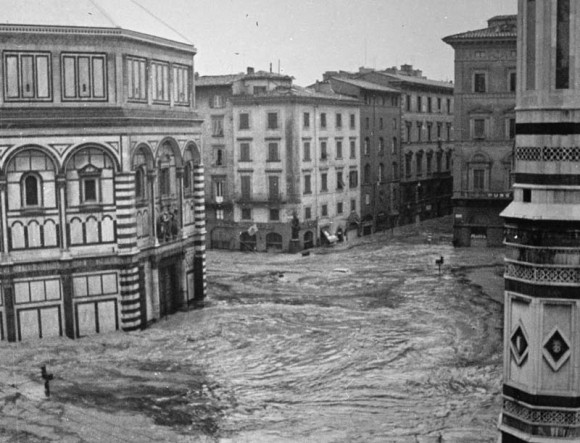As a boy he was discovered by the famous artist, Cimabue, who saw him sitting on a rock drawing such lifelike pictures of sheep that Cimabue offered to take him on as an apprentice. "Lifelike" was the hallmark of his art. His contemporary Giovanni Villani called him "the most sovereign master of painting in his time, who drew all his figures and their postures according to nature."
Many of the stories about Giotto's life and work come from much later, in the Lives of the Most Excellent Painters, Sculptors, and Architects by Giorgio Vasari (1511 - 1574). Vasari mentions that Giotto painted a fly on a face in a painting of Cimabue's so lifelike that Cimabue kept trying to brush it off. Another anecdote by Vasari tells that Pope Benedict XI sent a messenger to Giotto, asking for a sample of his artwork to determine if he was good enough to commission. Giotto sent a red circle by hand that was so precise it looked as if it had been drawn with a compass. The messenger reported to the pope that Giotto had not moved his arm when he drew it.
Vasari attributed many works to Giotto, but there are only a few with provenance that tie them directly to him. One is the decoration of the Scrovegni Chapel in Padua, completed around 1305. Its frescoes of the life of the Virgin and the life of Christ is regarded as one of the supreme masterpieces of the Early Renaissance. He was also chosen by the commune of Florence in 1334 to design the new campanile (bell tower) of the Florence Cathedral.
While we are on the subject of Italian Renaissance artists, we should not neglect Cimabue. We'll look at him tomorrow.


